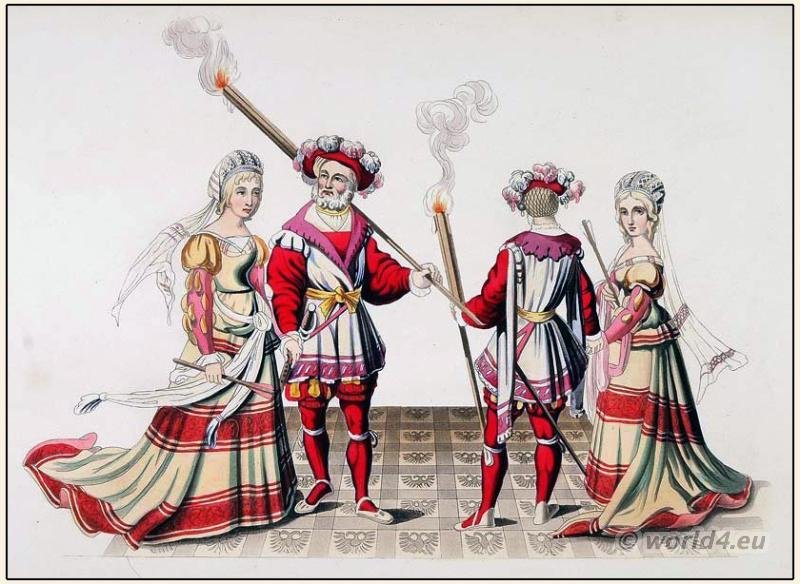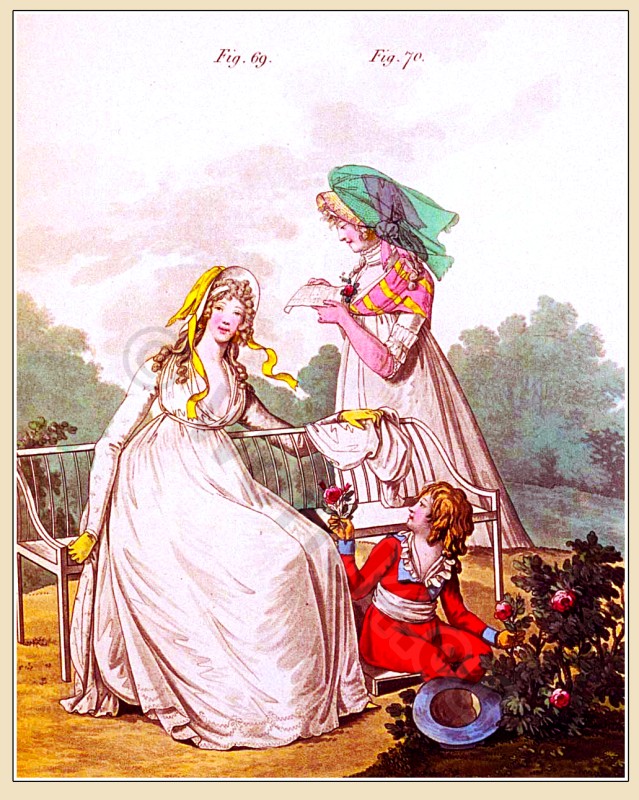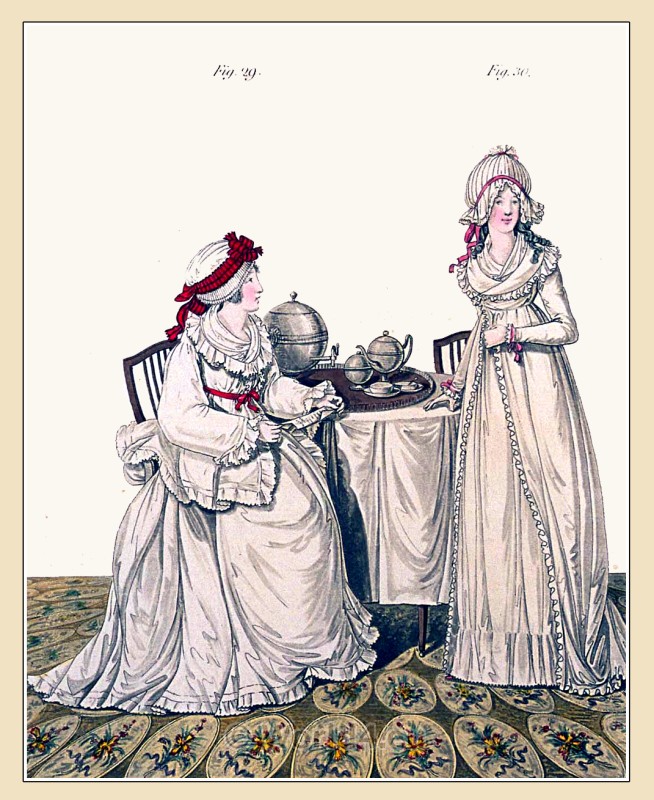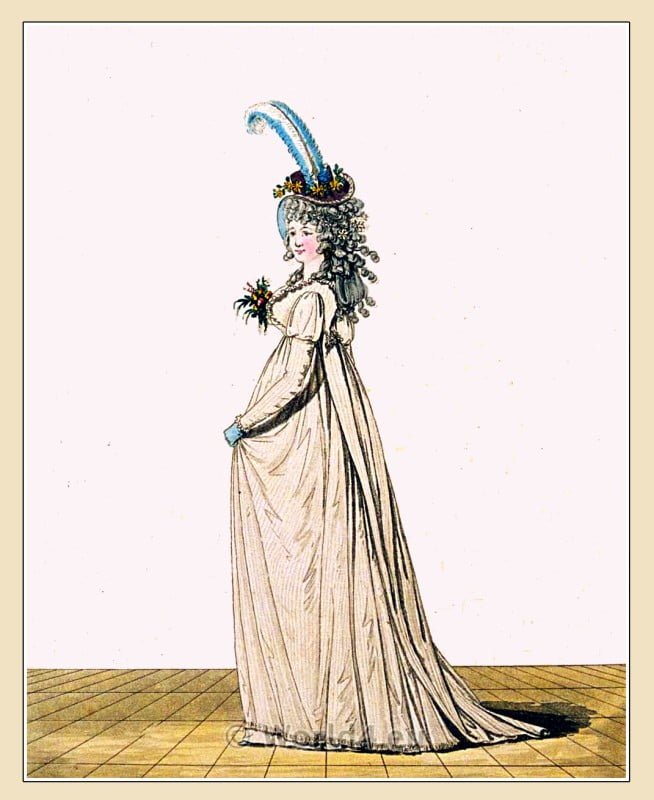The Gallery of Fashion. Morning Dresses. December 1794.
Round gown of fine India dimity. Black spotted demi-season silk close dress.
FIG. XXXII.
White taffeta bonnet, trimmed with a coquelicot and white striped riband, tied down with a half handkerchief; two white ostrich feathers, tipped with coquelicot, on the left side; deep black lace veil. Round gown of fine India dimity, flounced with plain muslin. Sash of coquelicot taffeta. Double handkerchief crossed and tied behind. White muslin cloak, trimmed with the same. Blue fox fur tippet. Grey gloves. Coquelicot and white striped shoes.
FIG. XXXIII.
The hair lightly frizzed, the hind hair in ringlets. White beaver hat, trimmed with carnation-coloured riband. White military full craped feather placed in the front. Pink and orange striped and black spotted demiseason silk close dress, scollopped at the bottom. Large white double handkerchief, and a yellow silk half handkerchief over it. Black silk cloak, trimmed with lace. Yellow gloves and shoes.
Source: The Gallery of Fashion Vol. 1,. April 1794 to March 1795. Published by Nikolaus von Heideloff, London.







